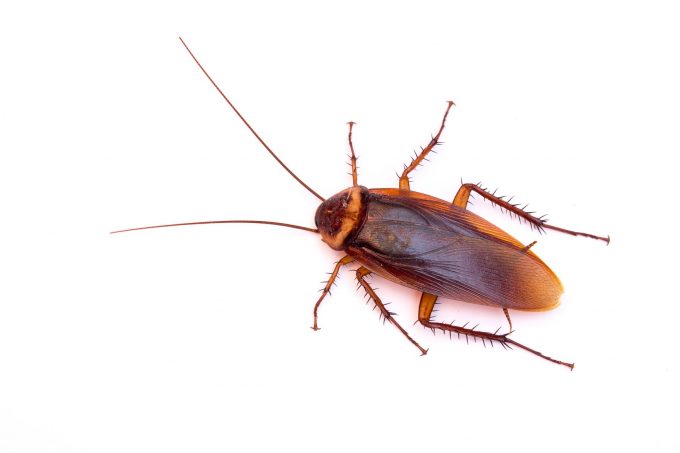
The crawlies giving accom owners the creeps
Bed bugs have been on the march in increasing numbers globally over the past year and tend to be detected in greater numbers following major sporting events – such as the Commonwealth Games.
After the London and Sydney Olympics, both host cities were identified as centres of bed bug infestations. According to ABC.net.au, bed bug populations in Australia are estimated to have swelled 5,000 percent since the year 2000.
All of which means Australia should be on high-alert for accommodation’s most unwanted guests.
After all, in this age of instant connection, an infestation could result in negative reviews or ugly pictures being speedily relayed around the world to many thousands of potential guests.
The good news is, once they are detected, there are effective treatment and prevention measures available.
Anyone can get bed bugs. While most people assume they are a product of poor hygiene, this is not the case.
Bed bugs are excellent travellers, that can latch onto luggage or clothing and be deposited anywhere, causing infestations in the cleanest of environments.
Although it is impossible to prevent the little creatures from being brought into your establishment, it is possible to undertake steps to minimise the risk:
1) Provide luggage racks
These help guests avoid them putting their bags on the bed and giving any hitchhiker bugs a direct passage to the bed.
2) Make detectives of your staff
Ensure your housekeepers are familiar with what bed bugs look like and can identify the tell-tale signs of their presence. They should always check the bed and bedding when cleaning or making up a room. All establishments should also conduct regular more thorough checks of all rooms. Although most will be found in the bedding they will also travel to other areas.
3) Invest in bug detecting traps
These will quickly provide evidence of a bed bug infestation. If one is found, there are likely to be more, and immediate action should be taken.
4) Use bed bug-resistant mattress encasements
Not only providing peace of mind, but by ensuring a clean and pest-free guest bed, they help protect your mattress investment.
A quality option will have a dust-proof flap and tamper-proof seal, making the mattress or pillow bed bug entry and escape proof, whilst also ensuring allergens can’t become airborne.
Cover the mattress encasement with a waterproof fitted mattress protector for easy removal and regular washing with other bedding.
5) Think about bed base castors
These are specially designed to prevent bed bugs from accessing the mattress from the floor and onto the bed legs.
6) Check the fabric care label
Always wash and dry bedding at the highest permissible temperature allowed. Bed bugs don’t like heat.
7) Vacuum seal
After vacuuming rooms, always make sure the contents from the vacuum are sealed in a plastic bag and discarded in a bin outside. Even if you haven’t seen them, the vacuum may have picked up a bed bug or their eggs.
Industry view: Karen Bowen, marketing manager for Protectabed.
How do staff go about detecting bed bugs?
To detect bed bugs, you first need to know what they look like.
All staff should be trained when inducted, with a regular refresher course put into place for the housekeeping team.
Bed bugs have small, flat oval bodies. Adults are brown in colour, reddening after feeding. Despite common misconceptions that they are too small to see, fully grown they are about 4-5mm in length, small but visible to the naked eye.
Hiding in nooks and crannies they are primarily nocturnal, emerging in the middle of the night to feed on those sleeping. It is therefore often not the bed bugs, but tell-tale signs of their infestation, that may be seen first. Little brown or black dots found on linen or the mattress itself.
Look out for brownish-red splotches from a bed bug that had fed on blood and was shortly thereafter crushed, shredded bed bug skins, and deposited white eggs and dark faecal matter. Eggs will be approximately 1mm in length, and difficult, but not impossible, to see.
Where are they most likely to be found?
Bed Bugs, although most commonly found in bedding, are capable of moving quickly and infection may be found throughout a guest’s room.
What should you consider when choosing a pest manager?
Firstly, look for renowned and reputable companies, ensuring that they are licenced pest controller and member of the AEPMA (Australian Environmental Pest Managers Association) with specific training in bed bug removal. There is a bed bug code of practice.
Find out what treatment programs they offer. Although heat treatments may be an option, pesticides will most likely be required, so check on what residual chemicals may be left and how long the premises need to be left unattended.
Ensure they offer ongoing inspections as these are an essential part of ensuring long term peace of mind for you and your guests. Often more than one treatment is needed to completely eradicate bed bugs.
What are the best post-treatment procedures?
Having eradicated bed bugs, you need to ensure that you are not again at risk in the future. You need to put into place a comprehensive pest management program. Be proactive. Train your team on how to identify and check as part of their normal routine for bed bugs. Use products such as bed bug detectors and mattress encasements.

AccomNews is not affiliated with any government agency, body or political party. We are an independently owned, family-operated magazine.





